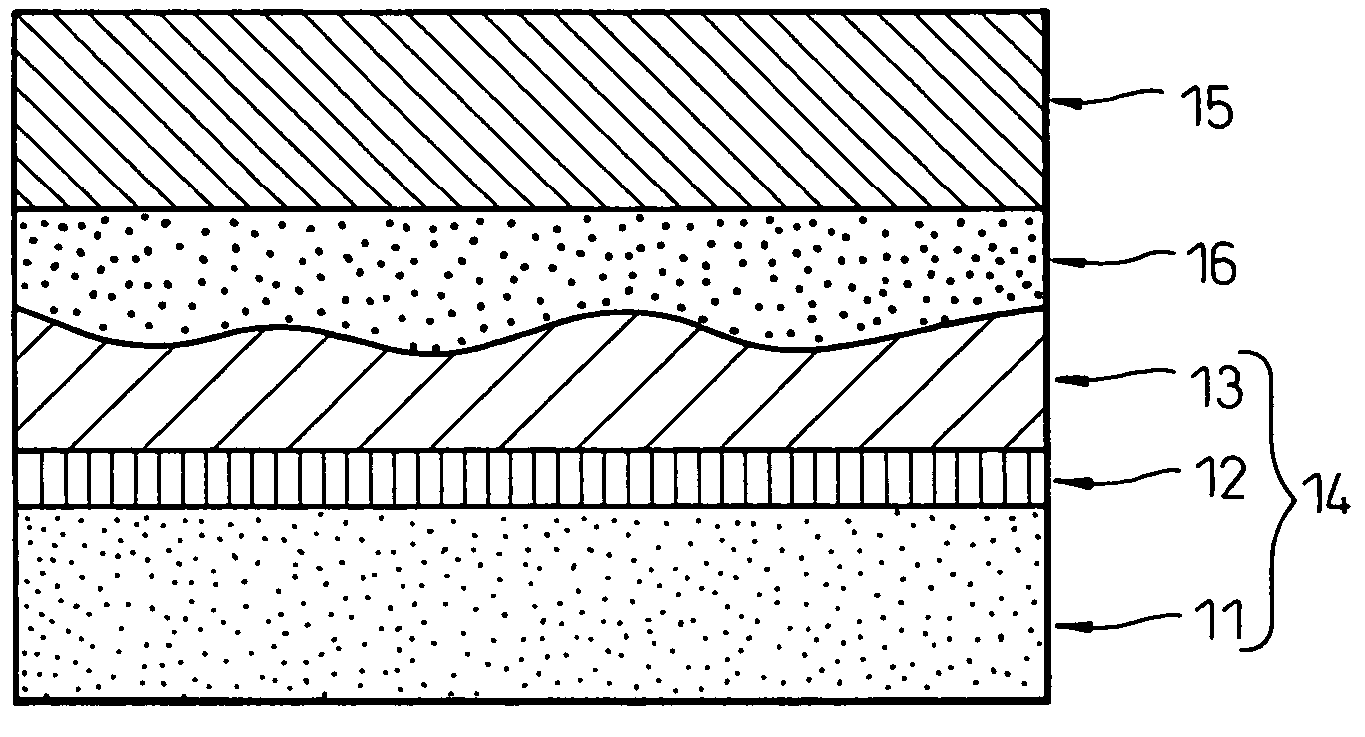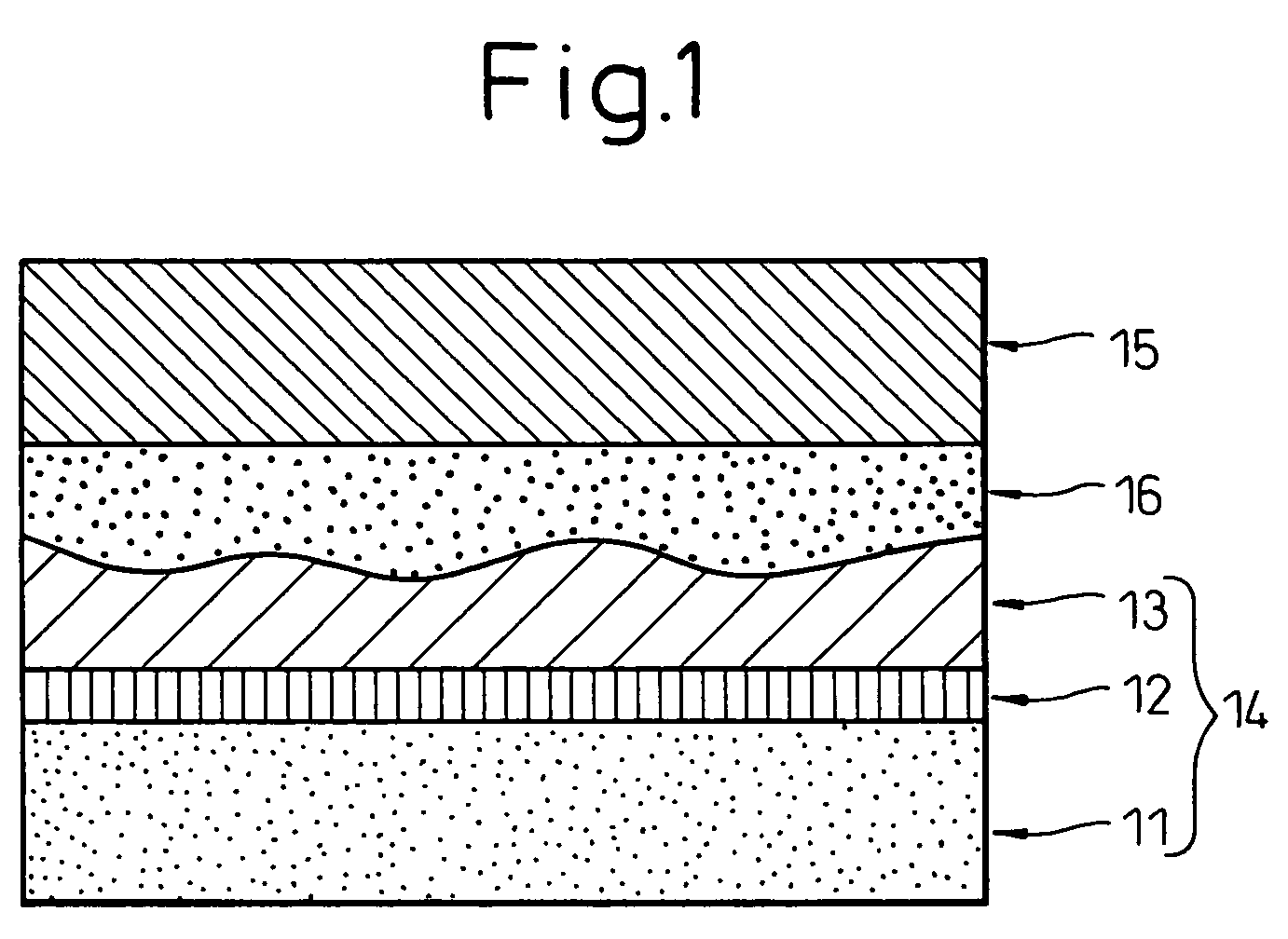Method for producing conductive polyaniline and organic polymer composition
a polyaniline and organic polymer technology, applied in the direction of organic conductors, non-metal conductors, conductors, etc., can solve the problems of poor processability, difficult to develop applications, and low solubility of polyaniline or a polyaniline derivative in organic solvents, and achieve high yield.
- Summary
- Abstract
- Description
- Claims
- Application Information
AI Technical Summary
Benefits of technology
Problems solved by technology
Method used
Image
Examples
examples
[0070] The present invention will now be explained in further detail by Examples, but the present invention is not limited to these Examples.
examples of preparation
[0071] Preparation of Polyaniline 1 (Conductive Polyaniline Dispersion)
[0072] In 100 g of toluene, as shown in Table I, 2 g of aniline, 4.2 g of dodecylbenzene sulfonic acid, 1.0 g of polyacrylic acid derivative (Solsperse 26000, made by Avecia), and 0.03 g of 4-methylaniline were dissolved, then 50 g of distilled water in which 3.58 ml of 6N hydrochloric acid was dissolved was added. 180 mg of tetrabutylammonium bromide was added to the mixed solution, the result was cooled to 5° C. or less, then 30 g of distilled water in which 5.4 g of ammonium persulfate was dissolved was added. The resultant mixture was oxidative polymerized in the state of 5° C. or less for 5 hours, then the toluene was distilled off in vacuo. The polyaniline precipitate formed in the water was obtained by filtration, then was rinsed with water to obtain the intended Polyaniline 1. The polyaniline obtained was dispersed in 150 g of toluene, then the aqueous layer was removed to thereby obtain a polyaniline to...
example 1 , examples 3
Standard Example 1, Examples 3 and Comparative Examples 2 to 4
[0089] Fabrication of Dye-Sensitized Solar Cell Fabrication of Photoelectrode
[0090] A transparent conductive glass substrate (made by Nippon Sheet Glass, conducting layer made of fluorine-doped tin oxide, FTO, 10Ω / □) was coated on its surface with a paste prepared by mixing titanium dioxide powder (AEROXIDE TiO2 P25, average particle size 25 nm, made by NIPPON AEROSIL), acetyl acetone, distilled water and a surfactant (Triton X100, made by Acros Organics) by a mortar, dried, then sintered at 460° C. for 45 minutes, whereby a mesoporous titanium oxide thin film was formed on the transparent conductive glass substrate. The glass substrate having this mesoporous titanium oxide thin film was dipped in an ethanol solution (concentration of 3×10−4 mol / liter) of ruthenium complex dye (i.e., cis-di(thiocyanate)-N,N′-bis(2,2′-bipyridyl-4,4′-dicarboxylic acid) ruthenium (II) complex, Ruthenium 535, made by Solaronix) for 12 hours....
PUM
| Property | Measurement | Unit |
|---|---|---|
| Percent by mass | aaaaa | aaaaa |
| Percent by mass | aaaaa | aaaaa |
| Length | aaaaa | aaaaa |
Abstract
Description
Claims
Application Information
 Login to View More
Login to View More - R&D
- Intellectual Property
- Life Sciences
- Materials
- Tech Scout
- Unparalleled Data Quality
- Higher Quality Content
- 60% Fewer Hallucinations
Browse by: Latest US Patents, China's latest patents, Technical Efficacy Thesaurus, Application Domain, Technology Topic, Popular Technical Reports.
© 2025 PatSnap. All rights reserved.Legal|Privacy policy|Modern Slavery Act Transparency Statement|Sitemap|About US| Contact US: help@patsnap.com



